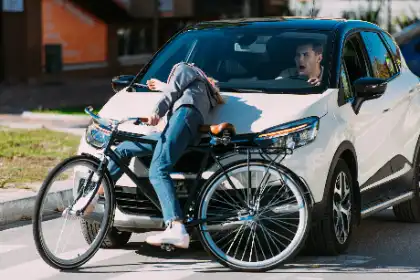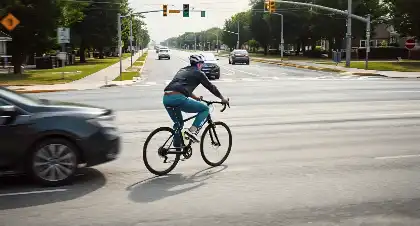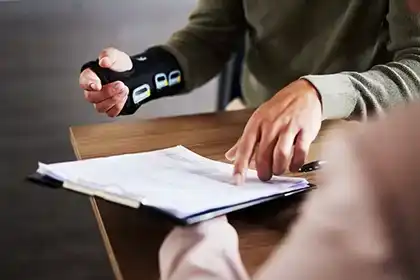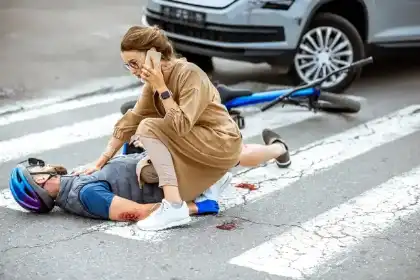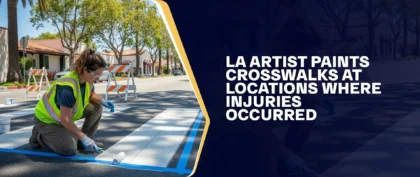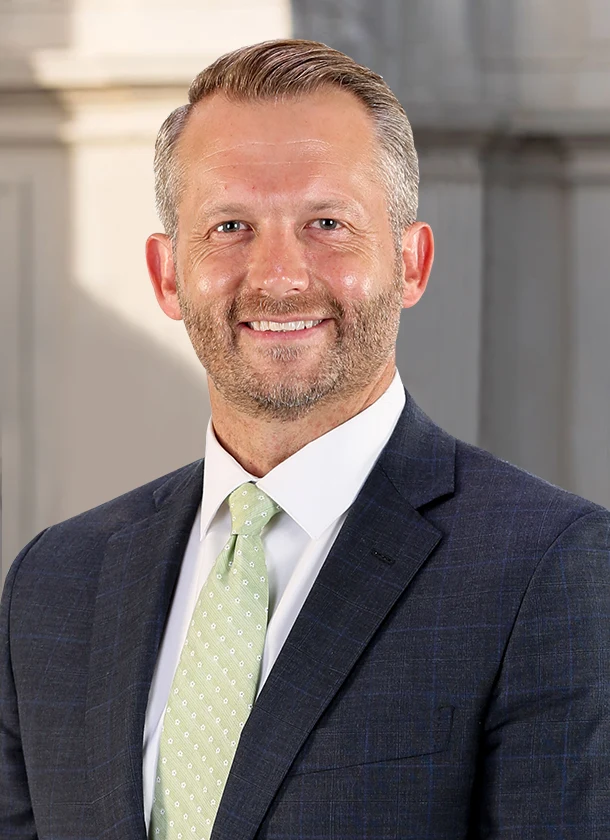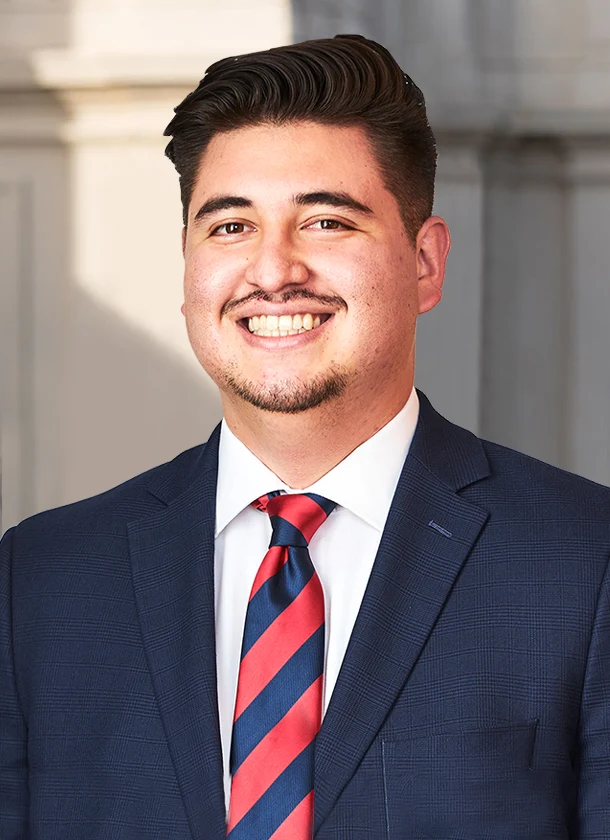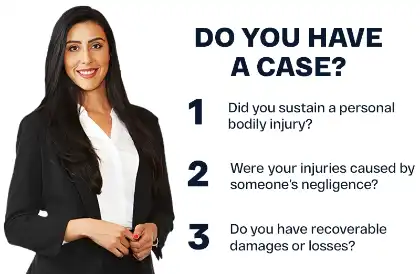Table of Contents
Cycling is a widely used mode of transportation across the United States. However, it carries risks, particularly when sharing the road with vehicles. The most common bicycle accidents are collisions involving motor vehicles. The most dangerous scenarios include right-hook crashes, dooring incidents, and rear-end accidents. Even a minor crash that barely dents a car can leave a cyclist with serious injuries.
The Sobering Reality Of Bicycle Accidents In America
According to the National Safety Council’s analysis of 2023 data from the National Center for Health Statistics, bicycle accidents claimed 1,377 lives in the United States. What’s particularly alarming is that 937 of these fatalities (68%) resulted directly from collisions with motor vehicles.
The data reveals a clear seasonal pattern in bicycle-related fatalities:
- Fatality rates increase significantly during warmer months.
- The peak danger period extends from July through October.
- October 2023 was the deadliest month, with 156 cyclists losing their lives.
These statistics aren’t just numbers — they represent real people whose lives ended while engaging in an activity that should promote health and well-being. The data underscores the critical need for improved cyclist safety measures, including enhanced driver awareness programs, dedicated cycling infrastructure, and stronger legal protections for vulnerable road users.
The Most Common Bike Accident
The most common and deadliest bicycle accidents involve collisions with motor vehicles, particularly on busy roadways. While 2023 data shows overall fatalities, location details aren’t available yet. For now, 2022 statistics from safety groups offer clearer insight into where these crashes happen and which roads are most dangerous for cyclists.
Location data helps city planners, safety groups, and cyclists make safer choices. In 2022, 1,105 bicyclists died in crashes with cars, a 13% increase from 2021 despite more safety campaigns. The Insurance Institute for Highway Safety (IIHS) found that 83% of fatal bike crashes happen in urban areas, making cities the most dangerous places for cyclists.
The IIHS found that 62% of cyclists killed in crashes weren’t wearing helmets, showing how vital helmets are for safety. While busy roads were the most dangerous, residential streets still accounted for 31% of deaths, often due to drivers not yielding or seeing cyclists. Only 3% of fatal crashes happened on interstates and freeways, where biking is usually not allowed but is still very risky.
The table below presents the breakdown of bicyclist deaths by road type in 2022:
| Road Type | Number of Accidents | Percentage (%) |
| Interstates and freeways | 37 | 3 |
| Other major roads | 699 | 64 |
| Minor roads | 340 | 31 |
| TOTAL | 1,084 | 100 |
This breakdown provides helpful information for cyclists. Most deaths happen on major roads, likely because of high speeds and heavy traffic. However, 31% of fatalities occur on smaller streets, which many riders may think are safer. The data shows that all roads carry risks, so cyclists should stay alert wherever they ride.
Key Statistics On Bicycle Crashes With Motor Vehicles 2021-2023
Bicycle accidents involving motor vehicles are becoming a growing public health issue, especially in urban areas. The data tells a concerning story: while the number of nonfatal cycling injuries has slightly declined in recent years, fatalities have shown a regarding upward trend. This increase in deadly accidents is especially pronounced among adult cyclists, many of whom use bicycles for daily commuting rather than just recreational purposes.
NHTSA’s Bicycle Safety data from 2021 to 2023 highlights key trends. It shows where and when these crashes happen most often, what types of vehicles are involved, and who is most at risk. These insights stress the urgent need for safer roads, better infrastructure, and increased awareness to protect cyclists. Here’s a closer look at the statistics:
Types Of Bicycle Collisions Involving Motor Vehicles
Bicycle accidents result from various factors, including negligence, dangerous road conditions, and a lack of awareness among cyclists and motorists. Recognizing the most common collision scenarios is crucial in promoting safer road practices.
Here’s a closer look at the types of motor vehicle crashes cyclists commonly face:
Intersection Collisions
Intersections are among the most dangerous places for cyclists, accounting for 373 out of 1,084 fatal bicycle crashes, according to the IIHS’s Fatality Facts 2022. The high risk stems from complex traffic patterns and multiple focus points, making it harder for drivers and cyclists to navigate safely. Many intersection accidents happen when drivers fail to yield the right of way or overlook cyclists while making turns.
Driveway Exit Collisions
Driveway exit collisions occur when a motorist pulls out of a private driveway, alley, side street, or parking lot and collides with a cyclist. These crashes often happen because drivers fail to notice or anticipate cyclists. They are particularly common in residential neighborhoods and commercial areas, where parked cars, landscaping, and other obstacles can obscure a driver’s view.
Overtaking Collisions
This type of accident occurs when vehicles attempting to pass a cyclist strike them from behind. Some motorists underestimate the space needed for a safe pass. Many accidents happen when drivers pass too closely, clipping the cyclist with their mirrors or forcing them off the road. These incidents may also occur at night, with factors like poor visibility and driver impairment due to alcohol or drugs playing significant roles.
Left-Hook Collisions
A left-hook collision occurs when a motorist turning left fails to notice an oncoming cyclist or misjudges their speed, cutting across the cyclist’s path and causing a crash. Bicycles’ smaller profile makes them significantly more difficult for drivers to detect, particularly at busy intersections with multiple distractions and visual obstacles.
The dynamics of left-hook collisions are hazardous because:
- They often occur at relatively high speeds when drivers try to “beat” oncoming traffic.
- The cyclist typically has minimal time to react or evade.
- The angle of impact frequently results in the cyclist getting thrown into traffic.
These factors combine to make left-hook collisions particularly devastating, often resulting in catastrophic injuries, including severe fractures, head injuries, spinal damage, and life-threatening internal trauma.
Safety Tip for Cyclists: When approaching intersections, assume you’re invisible to turning vehicles. Make eye contact with drivers whenever possible, use bright clothing and lights even during daylight hours, and be prepared to stop quickly if a car begins to turn across your path.
Right-Hook Collisions
When a cyclist rides along the right side of a traffic lane and nears an intersection, a motorist making a right turn may fail to see them, leading to a right-hook collision. Sometimes, a driver overtakes the cyclist and abruptly turns right, cutting them off and causing a crash. Bicycle accident lawyers can help injured cyclists establish driver negligence and pursue compensation for their injuries and losses.
Dooring Incidents
“Dooring” happens when a parked vehicle’s occupant suddenly opens a door into the path of an oncoming cyclist, causing a collision. Studies indicate these accidents are among the most common causes of cycling injuries. According to a report from the World Health Organization, collisions between cyclists and car doors make up over 25% of moderate injury cases. For cyclists, a sudden dooring crash can lead to painful falls or even being thrown into traffic.
Understanding The Root Causes Of Bicycle Accidents In California
California cyclists face unique challenges when navigating urban environments. While riding through notoriously congested roads like Los Angeles’ Sunset Boulevard or San Francisco’s Market Street, cyclists must simultaneously manage heavy traffic, distracted drivers, and often unpredictable road conditions. These high-traffic corridors represent just a fraction of the dangerous areas cyclists encounter daily.
Whether commuting through downtown intersections during rush hour, navigating suburban neighborhoods with limited bike infrastructure, or enjoying a scenic ride along popular routes like Venice Beach or the Golden Gate Bridge, the risk of an accident remains a constant concern. Even experienced cyclists following all safety protocols can become victims when a driver glances at their phone, a car door suddenly opens, or a poorly maintained road causes a loss of control.
Understanding the most common causes of bicycle accidents is essential for avoiding dangerous situations, establishing liability, and pursuing compensation when crashes occur. An experienced bicycle accident attorney can help determine the factors that contributed to your accident and assess liability.
Here’s a closer look at the most common causes of bicycle accidents:
Driver Error
Studies indicate that over 90% of traffic accidents are due to human factors, with one key reason being that drivers often overestimate their skills and misjudge road risks. This overconfidence leads to reckless or inattentive driving behaviors, putting cyclists at significant risk. Many bicycle accidents result from driver negligence, as motorists who fail to follow traffic laws or drive carelessly increase the chances of dangerous, sometimes fatal, collisions.
Here are some of the most common driver-related errors that contribute to bike accidents:
- Distracted Driving — Drivers using their phones, adjusting GPS, or engaging in other activities may fail to see cyclists in their path, leading to distracted driving collisions. According to NHTSA data, distracted driving was responsible for approximately 3,522 total traffic fatalities in 2021, and cyclists are particularly vulnerable to distracted drivers due to their smaller visual profile on the road.
- Speeding — Excessive speed reduces a driver’s reaction time and increases the force of impact, contributing to speeding-related accidents that are often fatal for cyclists.
- Failure To Yield — Some drivers fail to yield the right-of-way to cyclists at intersections, crosswalks, or when merging, increasing the risk of side-impact or head-on collisions.
- Running Stop Signs or Red Lights — Ignoring traffic signals can put road users, including cyclists, in immediate danger.
- Unsafe Lane Changes — Failing to check blind spots or signals before changing lanes can lead to a sideswipe accident, which could be fatal when a vehicle hits a cyclist.
- Driving Under The Influence — Alcohol and drugs interfere with a motorist’s decision-making, reaction time, and coordination. Impairment in these essential driving skills can significantly increase the risk of hitting a cyclist.
- Aggressive Driving — Tailgating or intentionally cutting off cyclists can lead to crashes, injuries, and even fatal accidents.
Other Contributing Factors That Cause Bicycle Accidents
Not all bicycle collisions result from drivers’ negligence; external factors also play a role. These hazards can make cycling dangerous, even for the most cautious riders. When these factors contribute to an incident, determining liability can be complex. Our experienced bike accident lawyers can help assess the situation, gather evidence, and determine potential liability.
Here are some common external factors that increase the risk of bicycle crashes:
- Poor Road Conditions — Potholes, debris, and uneven pavement can cause cyclists to lose control. Government agencies or property owners responsible for road maintenance may be liable for accidents caused by neglected, dangerous road conditions.
- Lack of Proper Bike Lanes or Infrastructure — Roads without designated bike lanes force cyclists to ride closer to traffic. Poorly designed or nonexistent infrastructure puts cyclists in vulnerable positions on busy streets.
- Bad Weather — Rain, fog, and strong winds reduce visibility and make roads slippery. Cyclists may struggle with braking and maneuvering, while drivers may fail to see them in adverse conditions.
- Low Visibility — Nighttime riding and poorly lit streets make it difficult for cyclists and drivers to see each other. A lack of street lighting or reflective road markers increases the likelihood of collisions.
- Mechanical Failures — Bike malfunctions, such as brake failure or chain issues, can prevent cyclists from properly stopping or controlling their bikes. Faulty manufacturing or lack of maintenance can contribute to these failures.
- Obstructed Views — Parked cars, large vehicles, and overgrown vegetation can block cyclists’ lines of sight, making it difficult for them and other motorists to see each other. Intersections and driveways with obstructed views are particularly hazardous.
California Bike Accident Laws
Under California law, bicyclists have the same legal rights and responsibilities as motor vehicle operators. This legal equivalence becomes particularly important when determining liability after an accident.
When cyclists suffer injuries due to someone else’s negligence, whether a driver, pedestrian, or even a government entity responsible for road maintenance, they may have the legal right to pursue compensation for their losses.
California operates under a fault-based insurance system, which means that the party responsible for causing an accident bears financial responsibility for the resulting damages.
This creates several potential avenues for seeking compensation after an accident for injured cyclists, depending on the specific circumstances of their case.
Injured cyclists may be able to pursue compensation through the following options:
- Filing A Claim With The At-Fault Driver’s Insurance — If a motorist caused the accident, their liability insurance should cover medical expenses, lost wages, and other damages.
- Filing A Personal Injury Lawsuit — If the at-fault driver’s insurance denies the claim or offers an insufficient settlement, the injured cyclist can file a lawsuit in California civil court.
- Using Personal Insurance Coverage — If cyclists have applicable insurance, such as uninsured/underinsured motorist (UM/UIM) coverage, they can file a claim with their provider.
California follows a comparative negligence rule, meaning an injured cyclist may still be able to seek damages even if the court finds them partially at fault. However, their compensation is reduced by their percentage of fault.
California’s statute of limitations requires cyclists to file personal injury cases within two years of the accident. However, if the claim is against a government entity (e.g., due to dangerous road conditions), the deadline is much shorter, typically six months from the accident date. Consulting lawyers who handle bike accidents is highly recommended for legal guidance on pursuing compensation and proving fault.
Do Bicycle Riders Have The Same Rights And Responsibilities As Drivers And Motorcycle Riders?
In the United States, bicycles are legally classified as vehicles. This means cyclists have the same rights and responsibilities as drivers and motorcycle riders. They are allowed to use public roads and should be treated with courtesy and care by other road users.
Cyclists’ Rights
- The Right To The Road — Cyclists can legally ride on most public streets like motor vehicles.
- The Right To Take The Lane — When a lane is too narrow for a car and a bicycle to travel safely side by side, cyclists may legally ride in the center of the lane to protect themselves.
- Protection From Unsafe Passing — In states like California, drivers must give cyclists at least three feet of clearance when passing.
- The Right To Use Bike Lanes — Motorists must respect marked bike lanes and avoid obstructing them.
Despite these rights, many drivers misunderstand cyclist behavior, especially when riders “take the lane.” This maneuver is often necessary for safety, but is sometimes perceived as unlawful by unaware motorists.
Cyclists’ Responsibilities
With these rights come important responsibilities. Cyclists must follow the rules of the road and ride in a manner that promotes safety for themselves and others.
- Obeying Traffic Laws — Cyclists must stop at red lights and stop signs, yield to pedestrians, and follow the rules of the road.
- Riding At A Safe Speed — Some areas may not apply posted speed limits to bicycles, but riders must still travel at safe speeds for the conditions.
- Following Local Sidewalk Laws — Many cities restrict adults from riding on sidewalks; these rules vary depending on the local ordinance.
- Facing Penalties For Violations — Cyclists can receive citations and fines for traffic violations, just like drivers.
A survey published in 2017 showed that cyclists break traffic laws at similar rates to motorists. This finding challenges the stereotype that cyclists are more reckless and suggests that rule-breaking behavior is not exclusive to any particular group.
Responsible Parties In A Bike Accident
Determining who is at fault is crucial for pursuing compensation and holding the responsible party accountable when a bicycle accident occurs. Liability depends on the specific circumstances of the crash, and multiple parties may share responsibility. Below are the key parties that may be liable in a bicycle accident:
- Motorists — Drivers can be liable if their negligence, such as speeding, distracted driving, or failing to yield, directly causes a bicycle crash. For example, if a driver looking at their phone runs a stop sign and strikes a cyclist with the right of way, the driver would likely be held fully responsible for the cyclist’s injuries and damages.
- Pedestrians — If a pedestrian carelessly steps into a cyclist’s path and causes a crash, they may share liability.
- Property Owners — Owners may be responsible if hazardous conditions on their property, like uneven sidewalks or obstructions, contribute to a bike accident.
- Government Entities — Government agencies can be liable for crashes caused by poor road conditions, missing signs, or a lack of bike lanes.
- Employers — Companies may face liability if their employee causes a bicycle accident while on the job.
- Manufacturers — If a defective bike part leads to an accident, the manufacturer or distributor can be held accountable under product liability laws.
- Construction Companies — If a construction site creates unsafe road conditions for cyclists, the company may be liable for accidents.
Determining liability in a bicycle accident requires a thorough investigation, evidence gathering, and legal knowledge. Experienced lawyers for bicycle accident cases can build a strong case and pursue compensation for your losses.
How To Prove Negligence In A Bicycle Accident Case
To pursue compensation after a bicycle accident, you must establish who was legally responsible for what happened. In legal terms, this means proving negligence. As the injured person (legally called the “plaintiff”), you must show evidence that someone else’s careless actions or failure to act appropriately caused your accident and injuries.
Your bicycle accident attorney will help you gather and present evidence that proves four essential elements:
- Duty of Care — The plaintiff must prove that the defendant had a legal duty to act responsibly and prevent harm. For example, motorists must follow traffic laws, while property owners must maintain safe conditions.
- Breach of Duty — Your bicycle accident lawyer must show that the defendant failed to uphold their duty of care. This breach could involve reckless driving, failing to yield, ignoring traffic signals, or creating hazardous road conditions that put cyclists at risk.
- Causation — The plaintiff must demonstrate that the defendant’s breach of duty caused the accident and injuries. The defendant may argue that other factors contributed to the crash without this link.
- Damages — To seek compensation, the plaintiff must provide evidence of actual losses, such as medical bills, lost wages, pain and suffering, and property damage. Without documented damages, there is no valid claim for financial recovery.
Substantial evidence, such as accident reports, medical records, witness statements, and expert testimony, can support these elements. Working with experienced bicycle accident attorneys helps gather and present the proper evidence to strengthen your claim and pursue fair compensation.
Types Of Damages In A Bicycle Accident Claim
Bicycle accident victims may be entitled to financial compensation for their losses. These damages are generally categorized into economic and non-economic losses, addressing the accident’s financial and personal impact.
Economic damages are the measurable financial losses resulting from the accident. These damages have a clear monetary value and can be calculated based on bills, receipts, and financial records. Examples include:
- Medical expenses
- Lost wages
- Loss of earning capacity
- Bicycle repairs
- Rehabilitation costs
- Medical device
Non-economic damages compensate for intangible losses that do not have a direct dollar amount but significantly impact a person’s quality of life. Common examples are:
- Pain and suffering
- Emotional distress
- Loss of companionship
- Disability or disfigurement
- Cognitive impairment
- Mental anguish
- Reduced quality of life
Assessing the full extent of damages is crucial in building a strong case for compensation. To evaluate your losses and pursue compensation, consult a knowledgeable lawyer who handles bike accident cases. Compensation is not guaranteed, and outcomes depend on the specific circumstances of each case.
Steps To Take After A Bike Accident
Knowing what to do next can protect your health, rights, and potential compensation if you’re involved in a bike accident. While every situation is different, here are some steps you may consider to help strengthen your case:
- Prioritize Your Safety First — Move yourself and your bike out of traffic to avoid further danger. Before making sudden movements, take a moment to assess any injuries.
- Report The Accident — Call 911 and report the accident to the police, especially if you sustain serious injuries. Paramedics can check for hidden injuries, and a police report will document key details of the crash.
- Document The Scene — Capture images of your bike, the vehicle involved, road conditions, traffic signals, and any visible injuries. These photos serve as valuable evidence if you need to file a claim.
- Collect Witness Information — If bystanders saw what happened, ask for their contact information and a brief statement. Their testimony can help clarify details and support your case.
- Note Environmental Factors — Document factors like weather, lighting, and traffic flow during the crash. These details can help establish what contributed to the accident.
- Seek Medical Attention — Some injuries, like concussions or internal trauma, may not show symptoms right away. A doctor’s evaluation ensures proper treatment and creates a medical record for your case.
- Consult With A Bicycle Accident Attorney — Contact a personal injury lawyer if the accident caused serious injuries or the liability is unclear. They can help protect your rights and seek potential compensation under the law. Complete our “Do I Have A Case?” form to begin the process.
Questions People Usually Ask About Bike Accidents
Below are some common questions people ask Arash Law attorneys about bike accidents. These answers help you understand your legal rights and how to pursue compensation for your injuries. For personalized advice, call our accident lawyers at (888) 488-1391 for a free initial consultation.
How Much Does It Cost To Hire A Bike Accident Lawyer?
Hiring a bike accident lawyer at Arash Law costs nothing upfront because we work on a contingency fee basis. Our attorneys work on a contingency fee basis, meaning we only receive a fee if we recover compensation for you. However, regardless of the outcome, you may still be responsible for certain case-related costs, such as court filing fees or expert witness expenses. A bike accident lawyer can review your case and explain how fees and costs may apply, so you have a clear understanding of what to expect.
How Can A Lawyer Help Me With My Bike Accident Case?
An injury attorney can help protect your rights, handle complex legal procedures, and seek payment for your damages based on the facts of your case. At Arash Law, our attorneys for bike accident cases provide comprehensive legal support by:
- Investigating the accident and gathering crucial evidence.
- Negotiating with insurance companies for a fair settlement.
- Communicating and negotiating with insurance companies regarding your claim.
- Assessing the full extent of damages, including medical bills and lost wages.
- Reviewing your case and explaining potential legal options and strategies.
What Is The Most Common Cause Of Bike Accidents?
The most common cause of bicycle accidents is driver error, particularly in urban areas. Throughout this article, we’ve discussed how distracted driving, failure to yield, unsafe passing, and other forms of driver negligence lead to most bicycle crashes involving motor vehicles.
Cyclist behavior can also contribute to accidents, including distracted riding and failure to follow traffic laws. In fact, data from NHTSA and IIHS show that driver actions are the primary factor in most serious and fatal bicycle collisions.
Protecting yourself means staying vigilant, following traffic laws, using proper safety equipment, and maintaining awareness of your surroundings. If you incurred injuries due to another party’s negligence, our experienced bicycle accident lawyers can help assess your case and explain potential options for pursuing compensation.
What Is The Most Common Injury In A Bike Accident?
Upper limb injuries are among the most common bicycle accident injuries, often affecting the shoulder, wrist, and hand. These injuries frequently result in significant complications, with many requiring hospitalization and, in some cases, surgical intervention. Collisions with motor vehicles are a leading cause of these severe injuries.
Do I Need A Personal Injury Lawyer For My Bicycle Accident Case?
Legally, you are not required to hire an attorney, but consulting one can be helpful. Lawyers handling bicycle accident cases can review your case, explain your legal options, and assist with negotiations or claims. You can call us at (888) 488-1391 for free advice from a bicycle accident lawyer at the initial consultation.
Consult With Arash Law’s Bicycle Accident Lawyers
If you or a loved one sustained injuries in a bicycle accident, you don’t have to navigate the complex legal process alone. Arash Law is a California injury law firm with a team of legal professionals, including car accident lawyers and bicycle accident attorneys, who handle a variety of incident cases and can review your situation.
Here are reasons to consider Arash Law for your bicycle accident case:
- Free, No-Obligation Consultations — Get an initial evaluation of your case at no cost.
- Experienced Legal Representation — Our team handles personal injury and accident claims.
- Convenient Service — We represent clients in Los Angeles, San Francisco, Sacramento, Sherman Oaks, San Jose, San Diego, Riverside, Pasadena, and the rest of California.
Insurance companies may attempt to limit settlements, so having legal support can help you understand your options and potential compensation for medical expenses, lost wages, pain and suffering, and other damages.
Call our bicycle accident lawyers at (888) 488-1391 for a free case evaluation.

